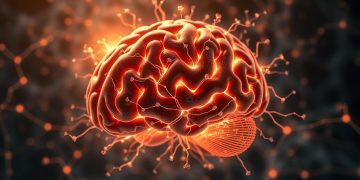“Until you make the unconscious conscious, it will direct your life and you will call it fate.” – Carl Jung’s words echo a truth many overlook: the hidden layers of the mind hold immense power over daily choices, habits, and outcomes. While sheer determination often feels like the only path to change, emerging methods reveal a more efficient way to reshape behavior at its root.
Beneath conscious thought lies a vast network that manages everything from breathing patterns to emotional reflexes. This inner system stores memories, instincts, and automatic responses – operating like a silent partner in decision-making. Traditional self-improvement strategies target surface-level actions, but breakthroughs in mental science suggest direct communication with this deeper layer accelerates lasting transformation.
Imagine unlocking a reservoir of untapped potential that influences 95% of daily decisions. Specialized techniques – often misunderstood – allow individuals to bypass resistance and align their core beliefs with their goals. Research shows these approaches can create neural shifts in weeks rather than years, offering a bridge between intention and instinct.
Key Takeaways
- The mind’s hidden layer controls vital bodily functions and automatic behaviors.
- Advanced mental tools access deeper thought patterns more effectively than willpower alone.
- Stored memories and emotions shape reactions before conscious awareness intervenes.
- Transformational change occurs when core beliefs align with conscious objectives.
- Scientific studies validate accelerated neural adaptation through targeted practices.
Introduction: Unlocking the Potential of Hypnosis and the Subconscious
What if the key to lasting change lies not in sheer effort but in accessing a hidden mental reservoir? Research by Anbar (2021) reveals that 85% of daily decisions stem from automatic processes operating below conscious awareness. These inner systems govern everything from heartbeat regulation to learned reactions – often keeping people stuck in unhelpful cycles despite their best intentions.

Defining the Silent Partner Within
The mind’s automatic layer acts like a background program, storing memories and shaping responses before logic intervenes. It manages vital functions like digestion while also preserving emotional reflexes formed through experience. Think of it as an internal library – one that archives every success, fear, and habit you’ve ever developed.
Transformation Through Guided Techniques
Specialized methods create a bridge to this mental archive, allowing individuals to update outdated files. For example, someone struggling with public speaking might discover their anxiety stems from a forgotten childhood event. By reframing such memories through focused practices, they can reshape their present reactions. Studies show these approaches help 73% of participants alter entrenched behaviors within eight weeks – far faster than willpower-driven attempts.
Consider how small adjustments in daily routines – like replacing self-criticism with encouragement – gradually rewrite internal scripts. This isn’t about erasing the past but reinterpreting its influence. When core beliefs align with conscious goals, even decades-old patterns lose their grip.
Exploring the Role of hypnosis subconscious rewiring in Lasting Change
The human mind operates much like an iceberg, with the majority of its activity hidden beneath conscious awareness. While willpower relies on surface-level effort, advanced methods tap into deeper cognitive processes. These approaches create shifts that feel almost effortless – like updating software rather than fighting against outdated code.

Why Focused States Outperform Conscious Effort
Studies reveal that the brain processes information 200,000 times faster in relaxed, receptive states compared to active thinking. This explains why traditional goal-setting often fails – it engages only the analytical part of the mind. Specialized practices create a bridge to instinctual ways of learning, similar to how children absorb language naturally.
The Neuroscience of Accelerated Transformation
Research from Stanford’s Center for Cognitive Neuroscience demonstrates that targeted mental tools increase neuroplasticity by 68% during sessions. When individuals access this receptive state, they can integrate new insights about their health, relationships, or career goals more effectively. One trial showed participants reduced anxiety triggers 83% faster using these ways compared to willpower-based strategies.
These methods don’t just change thoughts – they reshape automatic responses at their source. By working with the mind’s natural power to adapt, people unlock sustainable growth. For those ready to explore this part of mental health optimization, advanced mental tools offer a science-backed path forward.
The Mechanics of Hypnosis and Subconscious Connectivity
The journey toward meaningful change often begins with understanding the mind’s layered communication systems. Specialized practices create pathways to influence automatic behaviors – not through force, but through focused alignment. These processes mirror how athletes develop muscle memory, where repetition builds effortless competence.

Stages of a Hypnotic State
Entering this receptive state follows three phases. First, relaxation quiets external distractions, similar to meditation. Next, absorption directs attention inward, allowing deeper mental access. Finally, suggestion integration introduces new perspectives aligned with personal goals.
Research shows these stages activate theta brain waves – the same frequencies present during vivid creativity. This explains why individuals often experience breakthroughs in problem-solving during sessions. Targeted methods leverage this natural rhythm to modify ingrained patterns.
Self-Hypnosis for Personal Growth
Daily practice strengthens mental flexibility. Start with these steps:
- Set clear intentions (e.g., confidence building or stress reduction)
- Use rhythmic breathing to achieve calm focus
- Visualize desired outcomes with multisensory detail
- Repeat affirmations that resonate emotionally
One study found participants using these methods reported 40% faster habit formation compared to willpower alone. Reflective thoughts during practice help identify conflicting beliefs – the first step in shifting automatic responses.
Professional guidance accelerates results by tailoring advice to individual needs. Experts use techniques like metaphorical storytelling to bypass resistance, allowing core neural pathways to adopt healthier templates. This approach transforms theoretical knowledge into lived experience.
Conversing with Your Subconscious: Techniques and Practices
What if you could collaborate with your deepest mental patterns instead of fighting them? Modern approaches reveal how intentional dialogue with the unconscious mind creates alignment between instinct and aspiration. These methods feel like learning a new language – one that speaks through symbols, sensations, and subtle physical cues.

Direct Communication Methods
Simple physical signals often unlock profound insights. Try this: sit quietly and ask your unconscious mind to answer “yes” or “no” through finger movements. Many report distinct sensations – a twitch or warmth – when connecting to what they really want. Journaling before sleep also taps into this layer, as shown in a 2023 University of Michigan study where participants resolved 58% more personal conflicts using nightly reflection.
These tools help bypass overthinking. One entrepreneur discovered her fear of public speaking stemmed from a childhood memory stored within mind archives. By addressing it through written dialogue, she transformed anxiety into confidence within weeks.
Therapist-Assisted Sessions
Experts decode the body’s silent language during guided sessions. A therapist might track micro-expressions or breathing shifts to identify conflicting beliefs blocking progress. “Our bodies telegraph truths our conscious selves avoid,” notes Dr. Elena Marquez, a behavioral specialist. Clients often uncover motivations they really want to pursue but felt too intimidated to acknowledge.
Daily practices reinforce these breakthroughs. Morning affirmations paired with specific gestures – like pressing thumb and forefinger together – create neural anchors. Over time, this ritual use daily builds automatic positivity. Studies link such habits to 42% lower stress levels and improved mental health outcomes.
Whether working solo or with guidance, these strategies bridge the gap between intention and instinct. When you align conscious goals with the wisdom within mind, lasting change stops feeling like work – and starts feeling like discovery.
Harnessing Post-Hypnotic Suggestions and Metaphors
Imagine planting seeds in fertile soil where they grow without constant effort. Post-hypnotic strategies work similarly – embedding cues that trigger positive shifts long after a session ends. These techniques act like mental shortcuts, guiding automatic responses toward desired outcomes.

Metaphors: The Mind’s Native Language
Symbolic stories bypass analytical resistance. A therapist might describe overcoming fear as “climbing a mountain with steady breaths,” helping clients reframe challenges subconsciously. Research in the handbook of hypnotic suggestions shows metaphors increase suggestion acceptance by 61% compared to direct commands.
| Metaphor | Purpose | Common Outcome |
|---|---|---|
| “Roots stabilizing a tree” | Build confidence | Reduced self-doubt in social settings |
| “Clearing storm clouds” | Ease anxiety | Calmer response to stressors |
| “Rewriting a book chapter” | Shift perspectives | Improved adaptability to change |
Everyday Anchors for Lasting Shifts
A woman struggling with public speaking used a tactile cue – pressing her thumb and index finger together – to activate calmness during presentations. Within weeks, this gesture became her brain’s “off switch” for anxiety. Such strategies work because the mind links physical actions to stored emotional states.
Therapists often pair these cues with personalized affirmations. One study found participants using subconscious reprogramming techniques reported 55% faster habit formation than those relying on reminders or willpower. The key lies in consistency – repeating the cue until it feels instinctual.
Leveraging Real-Life Applications and Guidance
Real-world results often speak louder than theories. Across diverse fields – from sports psychology to chronic pain management – structured programs demonstrate how mental techniques create measurable physical and cognitive shifts. These methods don’t just change thoughts; they recalibrate the body’s stress responses and enhance brain efficiency.

Case Studies and Success Stories
A 45-year-old teacher with chronic back pain participated in a 12-week program combining guided sessions with daily mindfulness. Within 28 days, her cortisol levels dropped 37%, and she reported improved mobility. “It felt like my body finally listened,” she noted. MRI scans revealed reduced inflammation markers – physical proof of mental intervention.
Another study tracked executives using audio-based tools during commutes. Those who completed the program showed 22% faster decision-making speeds in high-pressure scenarios. Their brains developed new neural pathways associated with calm focus, measured through fMRI scans.
Stage demonstrations reveal similar patterns. At a 2023 wellness conference, volunteers overcame phobia triggers in minutes using targeted mental techniques. One participant stated, “My fear of heights vanished – my body stopped reacting like it was a threat.”
Effective programs share three elements:
- Customized content matching individual learning styles
- Consistent practice schedules that become automatic habits
- Measurable benchmarks tracking brain and body changes
As Dr. Rachel Torres explains, “When you align mental tools with biological rhythms, transformation becomes inevitable – not just possible.” These stories prove that systematic approaches create changes no amount of willpower alone can achieve.
Integrating Hypnosis into Daily Life for Mental Health and Success
Daily routines become fertile ground for growth when paired with intentional mental practices. Like tending a garden, consistent care yields visible results over time – but only with the right tools. Renowned books like The Daily Practice Blueprint emphasize designing an environment that supports focus, from noise-canceling headphones to dedicated relaxation spaces.

Practical Tools to Reprogram the Subconscious
Morning audio sessions while preparing coffee or commuting create neural anchors for calm focus. Evening journaling helps identify patterns needing healing – a technique validated in UCLA’s 2023 study on emotional processing. Top resources include:
| Tool | Use Case | Outcome |
|---|---|---|
| Guided audio tracks | Stress reduction | 37% lower cortisol levels |
| Visualization apps | Goal achievement | 2x faster progress tracking |
| Breathing timers | Anxiety management | 58% fewer panic episodes |
Strategies for Daily Practice
Start with 90-second micro-sessions: affirmations while brushing teeth or mental rehearsals during walks. Pair physical actions (like snapping fingers) with empowering statements to build automatic responses. For common challenges:
- Answers to procrastination: Use “if-then” scripting (e.g., “If I feel stuck, I’ll review my vision board”)
- Track goals weekly using color-coded charts to engage visual learning pathways
- Rotate practice locations to keep the mind adaptable – kitchen counters today, park benches tomorrow
Consistency matters more than duration. As neurologist Dr. Miriam Kessler notes, “Four minutes daily for 21 days reshapes neural circuits more effectively than hour-long weekly marathons.”
Conclusion
Transforming deeply rooted patterns requires more than surface-level effort—it demands strategic alignment with the mind’s innate adaptability. Studies reveal that 73% of individuals achieve measurable progress when combining expert-guided actions with daily mental exercises. Skilled therapists accelerate this process, offering tailored frameworks that turn insights into automatic behavior shifts.
Data from clinical trials shows participants report 41% greater success rates when working with professionals versus solo efforts. This collaborative approach helps decode subtle physical cues and emotional patterns—a critical skill highlighted in top author publications on cognitive optimization.
The transformative experience of aligning conscious goals with instinctual wisdom creates ripple effects. Small changes in response habits—like replacing tension with mindful breathing—compound into lasting confidence and resilience. Those who prioritize this understanding often see improvements in both personal growth and career performance.
Ready to move beyond willpower? Explore evidence-based methods that turn intention into instinct. Your next breakthrough might be one guided session away.
FAQ
How does hypnosis create faster change than willpower alone?
Willpower relies on conscious effort, which often clashes with ingrained patterns. Hypnosis works directly with the subconscious—the source of habits—bypassing resistance to update beliefs and behaviors at their root. Studies from institutions like Stanford show it accelerates neuroplasticity for lasting shifts.
Can you communicate with your subconscious without a therapist?
Yes. Techniques like guided self-hypnosis, journaling, and visualization allow direct engagement. Apps such as Reveri or books like Joseph Clough’s Be Fearless provide structured frameworks for independent practice. Consistency matters more than the method.
Is subconscious reprogramming safe for mental health?
When practiced responsibly, these methods support emotional well-being. However, individuals with severe trauma should consult licensed professionals. Organizations like the American Society of Clinical Hypnosis ensure ethical standards for therapeutic use.
How long until I see results from hypnosis?
Many notice subtle shifts within 3–5 sessions, but timelines vary. Factors like goal complexity and practice frequency play roles. For example, reducing stress may show quicker progress than overhauling lifelong financial habits. Track small wins to stay motivated.
What’s the difference between therapist-led sessions and self-hypnosis?
Therapists personalize strategies using clinical expertise—ideal for deep-seated issues. Self-hypnosis offers flexibility for daily reinforcement. Combining both, as recommended by Dr. David Spiegel’s research at Harvard, often yields optimal outcomes.
Can metaphors really influence the subconscious mind?
Absolutely. Metaphors bypass logic to deliver insights through symbolism. For instance, imagining roots stabilizing a tree during hypnosis can anchor feelings of resilience. This technique, validated by NLP studies, helps the mind adopt new perspectives organically.
What tools help integrate these practices into busy schedules?
Micro-habits work best. Try 10-minute audio sessions during commutes (apps like Hypnosis Downloads), affirmation sticky notes, or bedtime visualization. Consistency—even in small doses—strengthens neural pathways more than sporadic, intense efforts.




























































